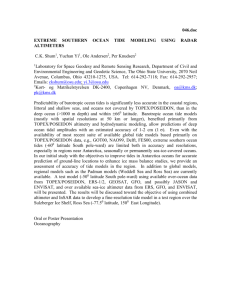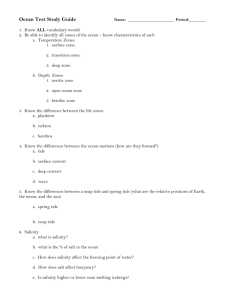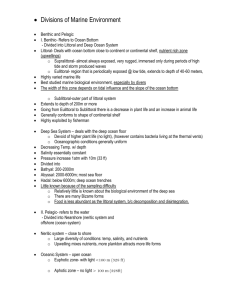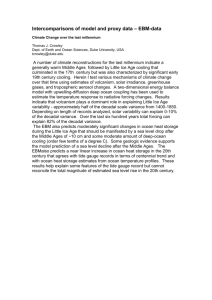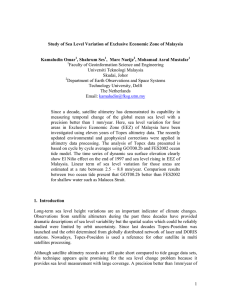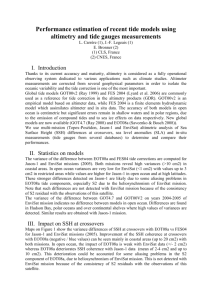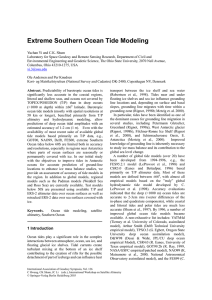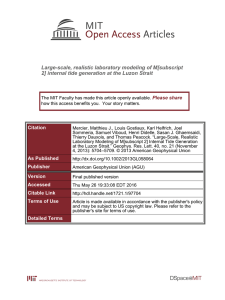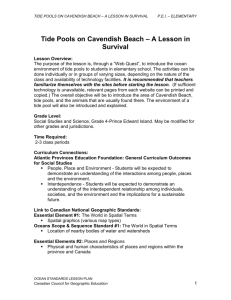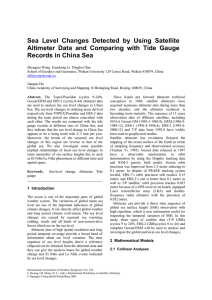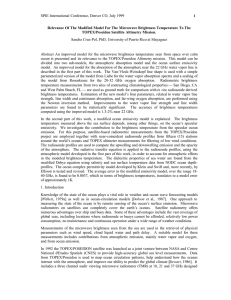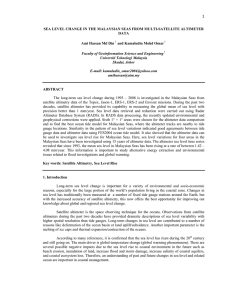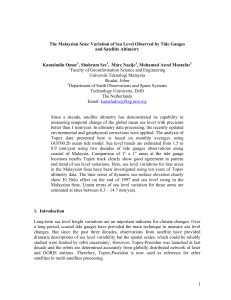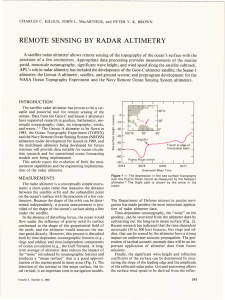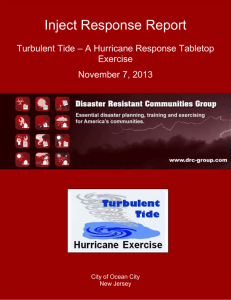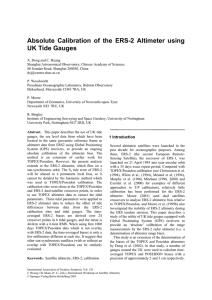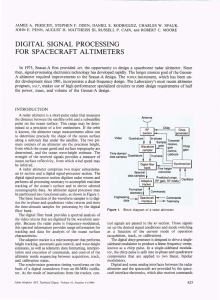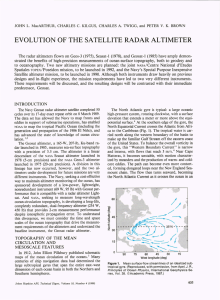Accuracy assessment of new tide models in coastal regions
advertisement
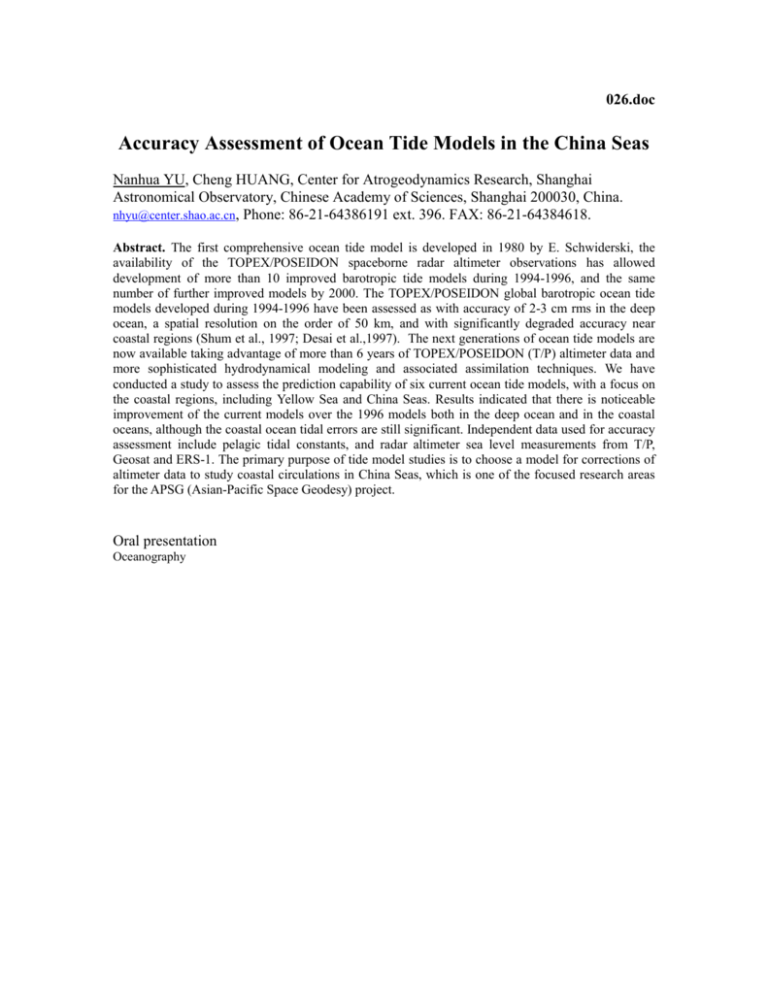
026.doc Accuracy Assessment of Ocean Tide Models in the China Seas Nanhua YU, Cheng HUANG, Center for Atrogeodynamics Research, Shanghai Astronomical Observatory, Chinese Academy of Sciences, Shanghai 200030, China. nhyu@center.shao.ac.cn, Phone: 86-21-64386191 ext. 396. FAX: 86-21-64384618. Abstract. The first comprehensive ocean tide model is developed in 1980 by E. Schwiderski, the availability of the TOPEX/POSEIDON spaceborne radar altimeter observations has allowed development of more than 10 improved barotropic tide models during 1994-1996, and the same number of further improved models by 2000. The TOPEX/POSEIDON global barotropic ocean tide models developed during 1994-1996 have been assessed as with accuracy of 2-3 cm rms in the deep ocean, a spatial resolution on the order of 50 km, and with significantly degraded accuracy near coastal regions (Shum et al., 1997; Desai et al.,1997). The next generations of ocean tide models are now available taking advantage of more than 6 years of TOPEX/POSEIDON (T/P) altimeter data and more sophisticated hydrodynamical modeling and associated assimilation techniques. We have conducted a study to assess the prediction capability of six current ocean tide models, with a focus on the coastal regions, including Yellow Sea and China Seas. Results indicated that there is noticeable improvement of the current models over the 1996 models both in the deep ocean and in the coastal oceans, although the coastal ocean tidal errors are still significant. Independent data used for accuracy assessment include pelagic tidal constants, and radar altimeter sea level measurements from T/P, Geosat and ERS-1. The primary purpose of tide model studies is to choose a model for corrections of altimeter data to study coastal circulations in China Seas, which is one of the focused research areas for the APSG (Asian-Pacific Space Geodesy) project. Oral presentation Oceanography
